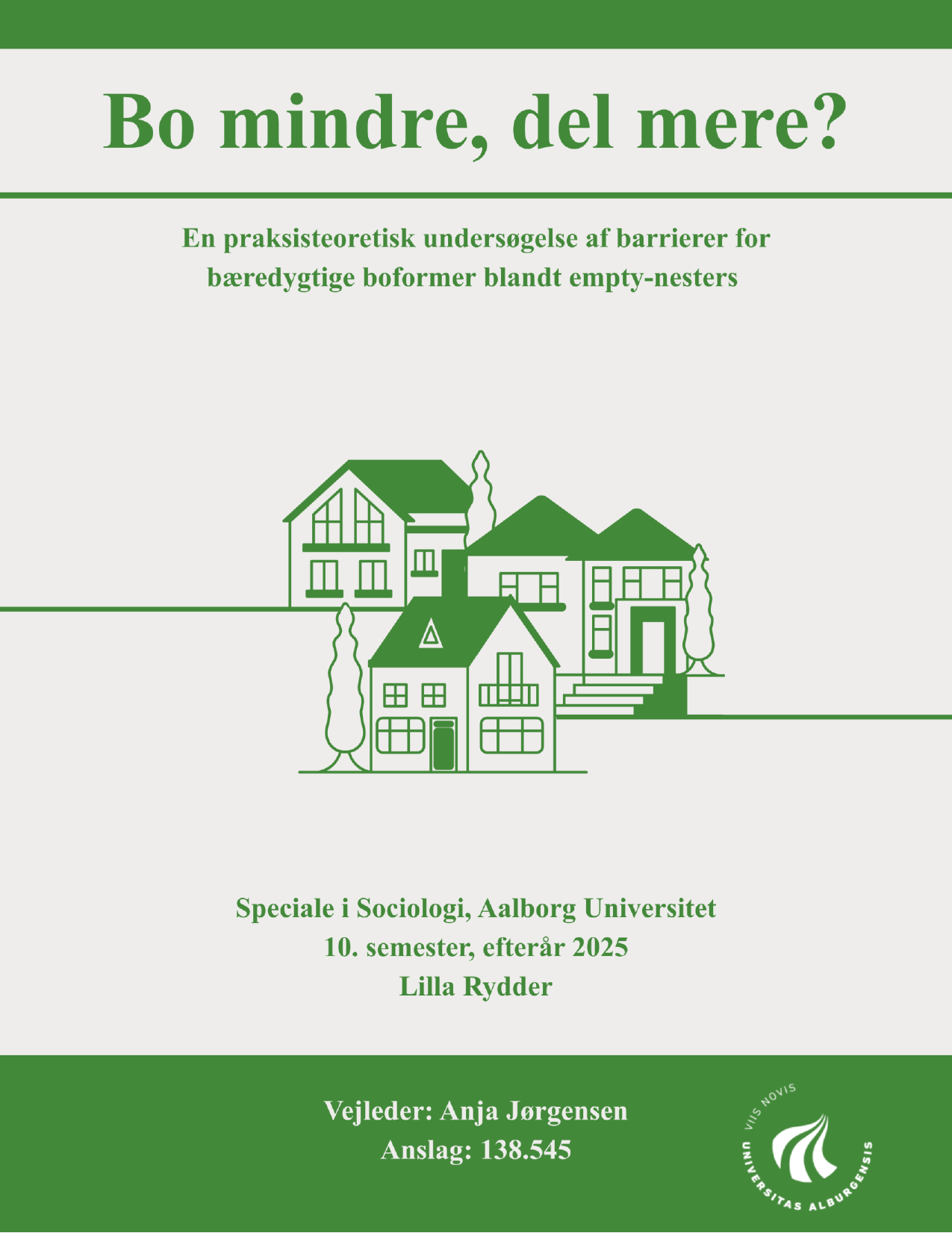
Bo mindre, del mere? En praksisteoretisk undersøgelse af barrierer for bæredygtige boformer blandt empty-nesters.
Oversat titel
"Live smaller, share more? A practice-theoretical study of barriers for sustainable housing among empty-nesters
Forfatter
Semester
4. semester
Uddannelse
Udgivelsesår
2025
Afleveret
2025-10-12
Antal sider
59
Abstract
In recent years, housing has been highlighted as one of the most significant carbon-emitting sectors globally, and Denmark ranks among the countries with the highest housing consumption in the world. This is primarily due to a combination of large living spaces and a high proportion of people living alone, which is particularly the case with single-family detached houses, which are increasingly inhabited by people whose children have left home, also known as “empty nesters”. The aim of this study has therefore been to answer the following question: Why do many people choose to remain in their house after their children have moved out, and what prevents them from choosing more sustainable housing alternatives? Using Elizabeth Shove’s practice theory as a theoretical framework, the issue was examined through eight qualitative interviews with eleven homeowners whose children have left home, as well as three interviews with experts on the field. My empirical findings suggest that there are a multitude of self-reinforcing barriers on both cultural and structural levels that discourage people from moving to more sustainable housing options. At the cultural level, strong housing norms dictate how much space and how many functions one should have available in their home. This culture is expressed through what I call the normalization of space-consuming practices, which include having room for the whole family, space for privacy in relationships, and storage space for things. The habit of having a lot of space for these practices is a major barrier for the motivation to move into something smaller, as these have become practices people can't imagine living without. At the structural level, economic, infrastructural, and legal barriers make it unattractive, difficult, or in some cases impossible to choose more sustainable housing. This includes a lack of financing options and economic incentives to live smaller, a lack of alternatives to detached single-family homes on the housing market, and housing laws that make it difficult to build a tiny house or divide up single-family homes. These structural conditions are shaped by the dominant and resource-intensive housing culture, which supports and reproduces itself, remaining the most widespread and accessible housing practice Alternative and more sustainable housing often fall outside existing systems, making them harder to implement. The challenge of encouraging people to move out of their homes after their children leave is a multifaceted issue that demands a wide array of solutions across multiple levels. Based on my findings, the biggest barriers for this change is the need for economic incentives to move in smaller spaces, as well as a cultural shift in what we consider normal and necessary in terms of space and functions within our own homes.
Emneord
